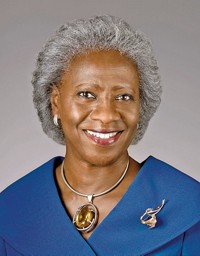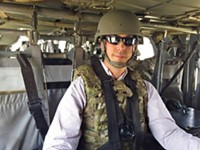Advertisement
Grab your lab coat. Let's get started
Welcome!
Welcome!
Create an account below to get 6 C&EN articles per month, receive newsletters and more - all free.
It seems this is your first time logging in online. Please enter the following information to continue.
As an ACS member you automatically get access to this site. All we need is few more details to create your reading experience.
Not you? Sign in with a different account.
Not you? Sign in with a different account.
ERROR 1
ERROR 1
ERROR 2
ERROR 2
ERROR 2
ERROR 2
ERROR 2
Password and Confirm password must match.
If you have an ACS member number, please enter it here so we can link this account to your membership. (optional)
ERROR 2
ACS values your privacy. By submitting your information, you are gaining access to C&EN and subscribing to our weekly newsletter. We use the information you provide to make your reading experience better, and we will never sell your data to third party members.
Careers
Career Ladder
Career Ladder: Amina Traoré Schartup
This biogeochemist and chemical oceanographer is passionate about the pursuit of knowledge
by Emily Harwitz
October 31, 2021
| A version of this story appeared in
Volume 99, Issue 40

1990s
An indirect path to chemistry
As a young girl in Mali, Amina Traoré Schartup wanted to be a philosopher. “There’s something about enjoying the unknown and trying to ask questions about the world around you,” she says. But, inspired by her geophysicist father, she decided that the best way for her to seek answers was science. Schartup attended a French international school in the city of Bamako, and hoped to study geoscience at a college in France. Access to information was scant—Schartup had to travel into town to use a computer because she didn’t have electricity at her house. Despite that challenge, Schartup was accepted into the first college she applied to, which happened to be the only one on her list that didn’t have a geoscience major. Instead, the school focused on premed, and she got her bachelor’s degree in organic chemistry.
2004-2012
Back to earth (science)

Schartup still wanted to study geoscience, so she applied for a master’s at the Paris Institute of Earth Physics. She worked on a research project investigating how metals and organic matter are transported by the Amazon River. During this time, she happened to read about how mercury from illegal gold mining in the Amazon was impacting human health. Schartup decided to pursue her PhD in the US so she could improve her English skills. She contacted potential PhD advisers who worked with mercury, and the one person who replied was University of Connecticut chemist Robert Mason. Schartup was hooked on oceanography after Mason took her out to sea to collect samples for his research.
2012-2019

Pollutants and policy
After her PhD in chemical oceanography, Schartup did a postdoc at the Harvard School of Public Health studying the bioaccumulation of pollutants, like mercury, in the Arctic. Though she loved research, Schartup wanted to explore other options. She spent several years at the Harvard John A. Paulson School of Engineering and Applied Sciences leading projects with international partners on environmental and health-related initiatives. She then moved to the American Association for the Advancement of Science for a Science and Technology Policy Fellowship, which helped her get a holistic understanding of how research gets done. “It was great, but at the end of it, I decided that I did want to get back to academia,” Schartup says.
Today
A lab of one’s own

Schartup is an assistant professor at Scripps Institution of Oceanography at the University of California San Diego. Her lab focuses on different aspects of the mercury cycle and includes projects that are purely geochemical and those related to human health. Her career may look planned, but “at every step, you try all these different things,” she says. “One of them works out, but 30 failed.” That’s especially true for students who may have limited access to resources and information, Schartup adds. “If you are in a developing country—give me a call. We can talk,” Schartup says. “That’s a difficult path, that’s for sure.”
Know a chemist with an interesting career path? Tell C&EN about it at cenm.ag/careerladder.
Check C&ENjobs for the latest job listings, as well as featured videos on what chemists do.
CORRECTION
This article was updated on Nov. 16, 2021, to correct how Amina Traoré Schartup got involved in mercury research and how she chose her PhD adviser. She learned about mercury’s impact on human health while reading for a different project involving metallic river inputs; she wasn’t randomly assigned to a project involving mercury. She chose her PhD adviser in part because he worked on mercury.





Join the conversation
Contact the reporter
Submit a Letter to the Editor for publication
Engage with us on Twitter